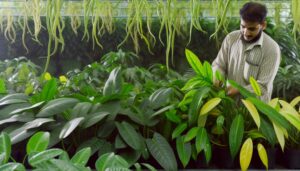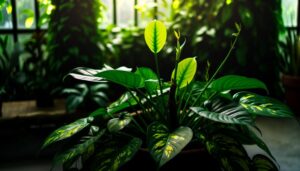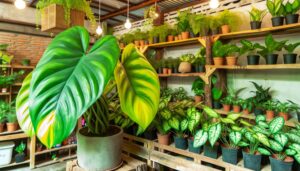What Does a Mature Philodendron Xanadu Look Like?
A mature Philodendron xanadu typically reaches a height of 1-1.5 meters and spreads 1.5-2 meters, displaying a clumping growth habit. Its deeply lobed, pinnatifid leaves measure up to 40 cm long and feature 15-20 symmetrical lobes.
The adaxial leaf surface is smooth and glossy, while the abaxial side is paler. Robust petioles, 20-30 cm in length, support the coriaceous, dark green foliage.
Inflorescences are rare and consist of a spadix encased in a creamy white spathe. This plant thrives under bright, indirect light, favoring temperatures of 18-24°C and high humidity.
Explore further to appreciate its complete botanical intricacies.
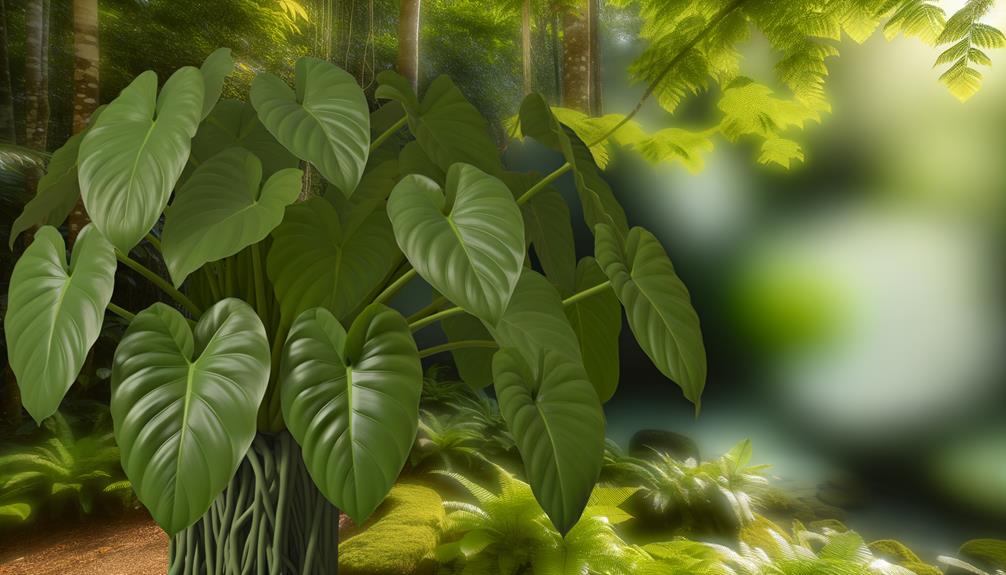
Key Takeaways
- Mature Philodendron xanadu reaches 1-1.5 meters in height with a spread of 1.5-2 meters.
- It features deeply lobed, pinnatifid leaves up to 40 cm long and 25 cm wide.
- The leaves are dark green, glossy, and leathery, with a paler underside.
- It has a clumping growth form with robust petioles measuring 20-30 cm.
- Infrequent, creamy white spathes may appear under ideal conditions.
Leaf Structure
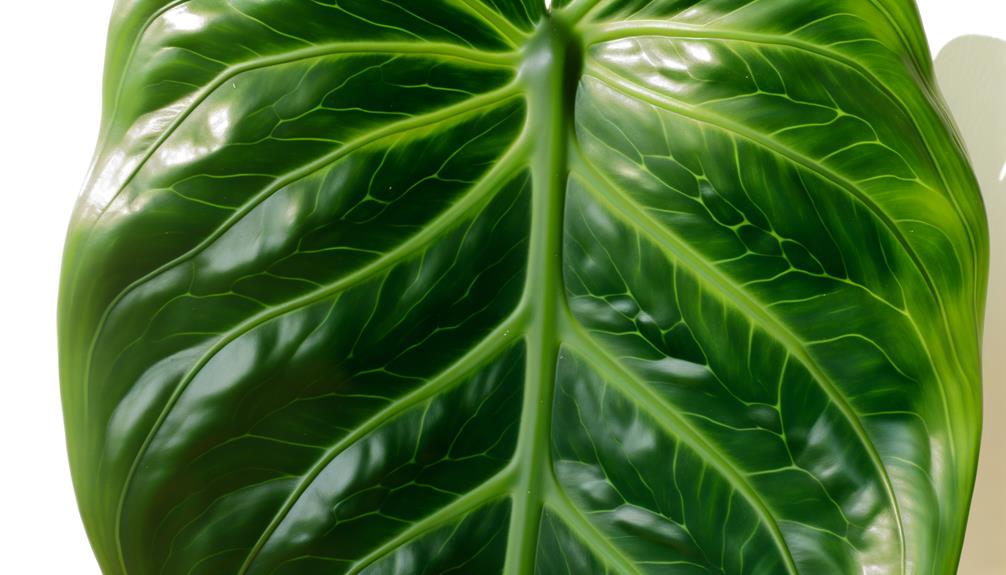
The leaf structure of Philodendron xanadu is characterized by deeply lobed, pinnatifid leaves that can grow up to 40 centimeters in length, exhibiting a glossy, dark green appearance.
Each leaf comprises multiple lobes, typically ranging from 15 to 20 per leaf, arranged symmetrically along the central rachis. The adaxial surface is smooth and glabrous, enhancing its reflective quality, while the abaxial surface is slightly paler and less lustrous.
Leaf venation is pinnate, with prominent primary veins extending from the midrib to the leaf margins. The petiole, which attaches the leaf blade to the stem, is robust and channelled, measuring approximately 20 to 30 centimeters.
This intricate structure facilitates efficient photosynthesis and gas exchange, essential for the plant's metabolic functions.
Size and Growth
Philodendron xanadu typically attains a mature height of approximately 1 to 1.5 meters, with a spread of around 1.5 to 2 meters, reflecting its robust and expansive growth habit.
This perennial species, classified under the Araceae family, exhibits a clumping growth form, which contributes to its dense and bushy appearance.
The plant's growth rate is moderate, achieving its full potential over several years under ideal conditions. It thrives in well-drained, organically rich soil with consistent moisture and prefers partial to full shade environments, making it ideal for both indoor and shaded outdoor settings.
Regular pruning can maintain its size and promote vigorous growth, ensuring that Philodendron xanadu remains a focal point in any botanical collection.
Color and Texture
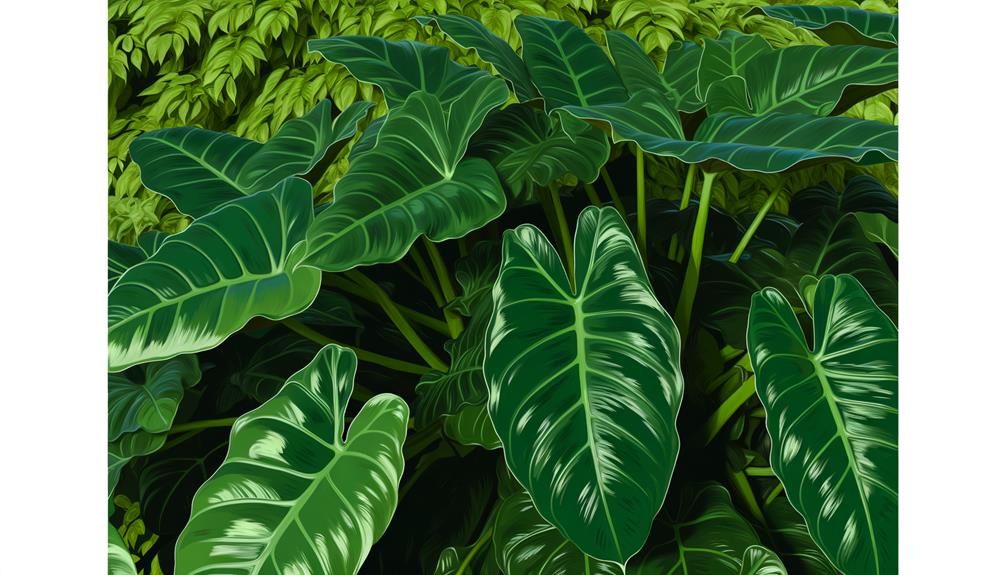
Exhibiting a striking combination of deep green, glossy leaves with a leathery texture, Philodendron xanadu's foliage is characterized by its distinctive lobed shape and prominent venation. Each leaf, typically measuring 20-40 cm in length and 15-25 cm in width, features deeply incised margins, giving it a feather-like appearance.
The adaxial (upper) surface is marked by a rich, dark green hue, while the abaxial (lower) surface often presents a slightly lighter shade. The leaves' coriaceous (leather-like) texture is due to the presence of thick, cuticular layers, which enhance its durability and resistance to environmental stressors.
The venation pattern is reticulated, offering both structural support and efficient nutrient transport, essential for the plant's overall health and robustness.
Flowering Patterns
Although Philodendron xanadu is primarily grown for its ornamental foliage, it occasionally produces inflorescences consisting of a spadix encased in a spathe, typical of the Araceae family.
The spadix, measuring approximately 10-15 cm in length, is covered in tiny, densely packed flowers. The surrounding spathe, which can be up to 20 cm long, is initially green but may turn a shade of creamy white as it matures.
Flowering generally occurs under ideal conditions and may be infrequent in typical indoor settings. The inflorescences are not particularly fragrant and are often overshadowed by the plant's lush, deeply lobed leaves.
While not a primary feature, the flowering pattern of Philodendron xanadu adds an intriguing aspect to its overall morphology.
Ideal Conditions
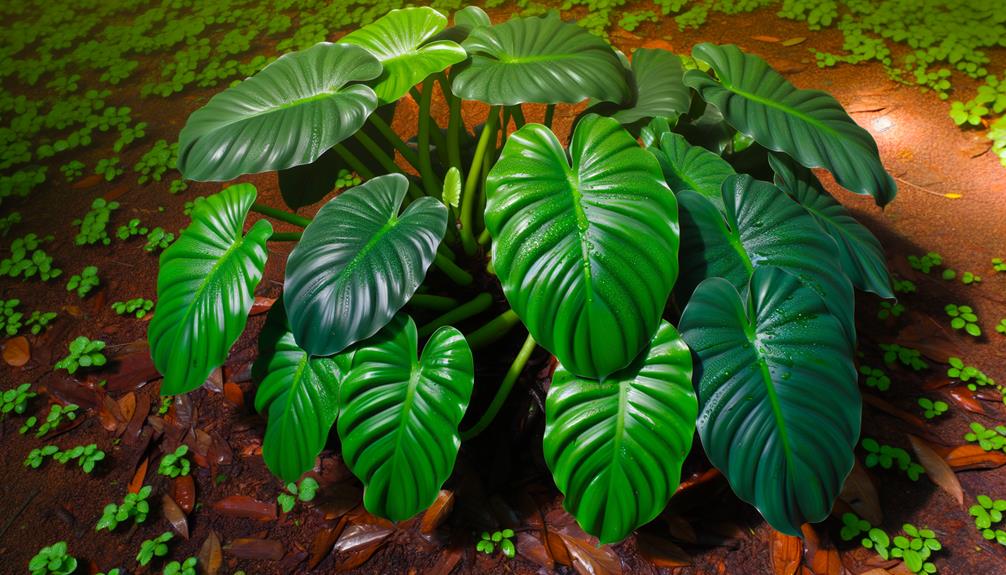
To achieve the occasional flowering and maintain best foliage health, Philodendron xanadu requires specific environmental conditions tailored to its natural habitat. Best growth occurs at temperatures between 18-24°C (64-75°F) with humidity levels maintained at 60-80%. Adequate light exposure is essential; bright, indirect sunlight is ideal to prevent leaf burn and promote robust leaf development.
Substrate should be well-draining, comprising organic matter, perlite, and pine bark for optimal aeration and moisture retention. Soil pH should range between 5.5 and 6.5 to guarantee nutrient availability. Irrigation should be consistent but avoid waterlogging; allowing the top 2-3 cm of soil to dry out between waterings.
Fertilization bi-monthly with a balanced, water-soluble fertilizer (20-20-20) is recommended.
Conclusion
A mature Philodendron xanadu, with its deeply lobed, glossy leaves of rich green hue, stands as a tribute to nature's intricate design. Reaching heights of 0.6 to 1.2 meters, its lush, expansive foliage creates a lush canopy that thrives in ideal humidity and filtered light.
The plant's unique texture, coupled with sporadic, inconspicuous inflorescences, invites admiration and awe. This botanical marvel, flourishing under precise conditions, epitomizes the harmonious balance between beauty and resilience in the plant kingdom.

